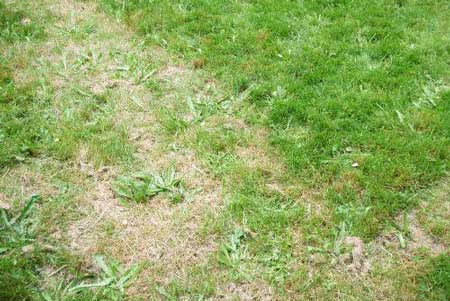Lawn Care
When and how to start
Autumn is the best time to sow a new lawn and rejuvenate an old lawn because from March to mid-April. This is because the autumn rains will soak into the soil while it's still warm helping grass to establish.
Establishing New Lawn
Remove weeds
- Remove all perennial weeds from the area that is to be laid to lawn, such as couch and dock with a fork and then use a rotary hoe to cultivate a seed bed about 20cm deep.
Hollows and high places must be levelled out
- Use a long board of wood as well as stamp down with your heels - this will help find all the soft spots that would sink and create hollows after the very first rain.
- A roller is not suitable at this stage for developing a level surface as it will simply roll the mounds and straddle the low bits.

Select grass seed
Most lawns are sown with fine leafed grass seed such as fescue and browntop and this is fine for a show lawn but for a hard wearing lawn that will take the punishment of family cricket and playful dogs, select a lawn mixture that contains some rye in the mix.
Clover is not recommended in a good lawn as it produces a large head of leaves that spread over a largish area in summer then shrinks back in winter, allowing weeds to take over before the clover re-grows.
Sowing grass seeds
- Divide the whole amount of grass seed you have into four parts and use each to sow up and down the area, across, and diagonally - helping to ensure an even coverage.
- Rake the seed in very lightly and roll.
- Moisten each morning to stop the birds from enjoying wonderful dust baths and you will find cats are not fond of digging damp soil either. Moisture is also vital for germination.
- When the grass is 6cm to 8cm high it may be cut with a lawn mower set high.

Rejuvenating old lawn
- Spray out dandelions and daisies and rake or scarify up old thatched grasses that tend to choke out a lot of lawn grass which is often the cause of a thin patchy lawn.
- Fill in the low areas with soil and stamp down with your heels
- Rake and level the area
- Sow lawn seed by scattering some seed over scarified area and sprinkle a little top soil on top of the seed
- Keep the area moist to help the germination.
If grass grub has been a problem in the past, attack these pesky pests immediately! Many families of young grubs are silently underground eating the grass roots and it is not until the damage has already been done that we notice the destruction.
If damage is already beginning to show, sprinkle Kiwicare's LawnPro Protect.
8018